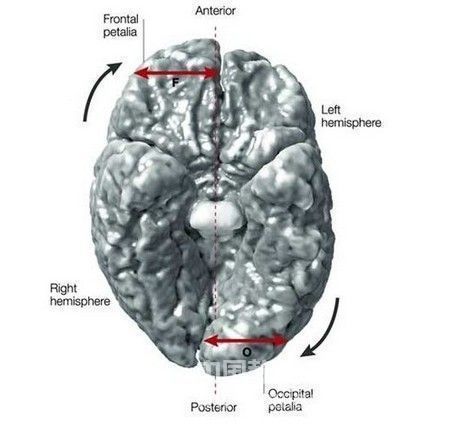The researchers compared the geometrical differences between human and chimpanzee brain scans. They observed that there are structural asymmetries in both human and chimpanzee brains, but the human brain is particularly noticeable. These findings indicate that the human and chimpanzee brains have evolved a high degree of adaptability during development. An anthropologist at George Washington University and lead author of the study, Aida Gomez-Lobos said: "Some areas of the left hemisphere of the brain are larger than the right hemisphere, which is very common.

The asymmetry and specialization of the cerebral hemisphere was once considered to be unique to humans, but it also exists in primates and other animals. There are several forms of asymmetry: one is that half of the brain is always larger than the other half, which is called unidirectional asymmetry; one is that some individuals in the group have half of the brain larger than the other half, and some of the other half of the brain are more Large, called antisymmetry; there is also a difference between the two hemispheres of the brain and the ordinary shape, called volatility asymmetry. Genetics is believed to play a role in the first two asymmetries. But scientists believe that volatility asymmetry may be the result of environmental factors affecting brain development.
In their research, Gomez-Lobos and colleagues used magnetic resonance imaging scans to compare the differences between the human brain and chimpanzee brains, and reconstructed the brain hemisphere in three dimensions. Then they used statistical techniques to compare the differences in brain structure between humans and chimpanzee individuals, as well as the differences between the two races. Unsurprisingly, the human brain has enlarged frontal bones and parietal lobe compared to chimpanzee brains. The patterns of change observed in human and chimpanzee brains indicate that this structural change is advanced from a common ancestor, which allows them to adapt to the selection pressures brought about by the environment. The lack of symmetry in the brains of the two species may be a sign of their flexibility or plasticity. Flexibility adapts the brain to the surrounding environment, and this adaptability results in an asymmetric brain.
more than 10 Years manufacture experience,Quality and delivery time guaranteed,Price and Service Supplied
Polyester twisted rope is highly resistant to ultra-violet rays, stays flexible and does not shrink or harden,does not float .Low stretch, abrasion resistant. Spliceable. Resists chemicals.
P.E. rope is at widely used of the synthetic ropes. It is resistant to acids, oils, grease, gasoline and most chemicals, and it is designed to be tough. We gather the R&D, production and international trade all-in-one and become a comprehensive enterprise group.High Quality 3 Strand Rope.
3 Strand Rope
Braided Safety Strands Rope,Rope Used In Marine,3 Strand Mooring Rope,High Tensile Rope
Yangzhou Kenasi International Trade Co. Ltd. , https://www.knsmy.com